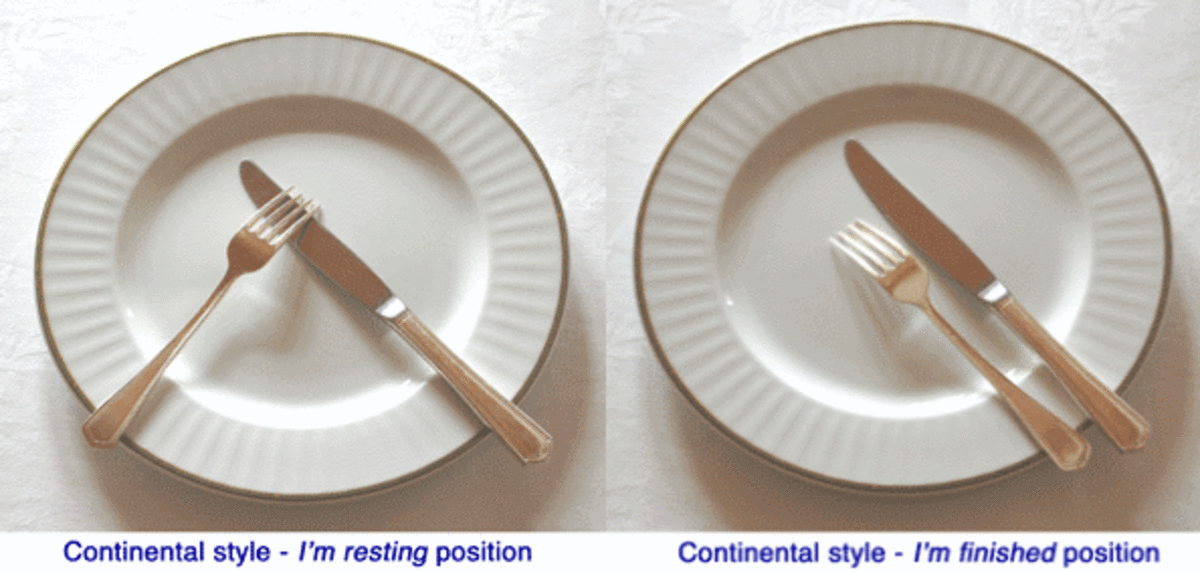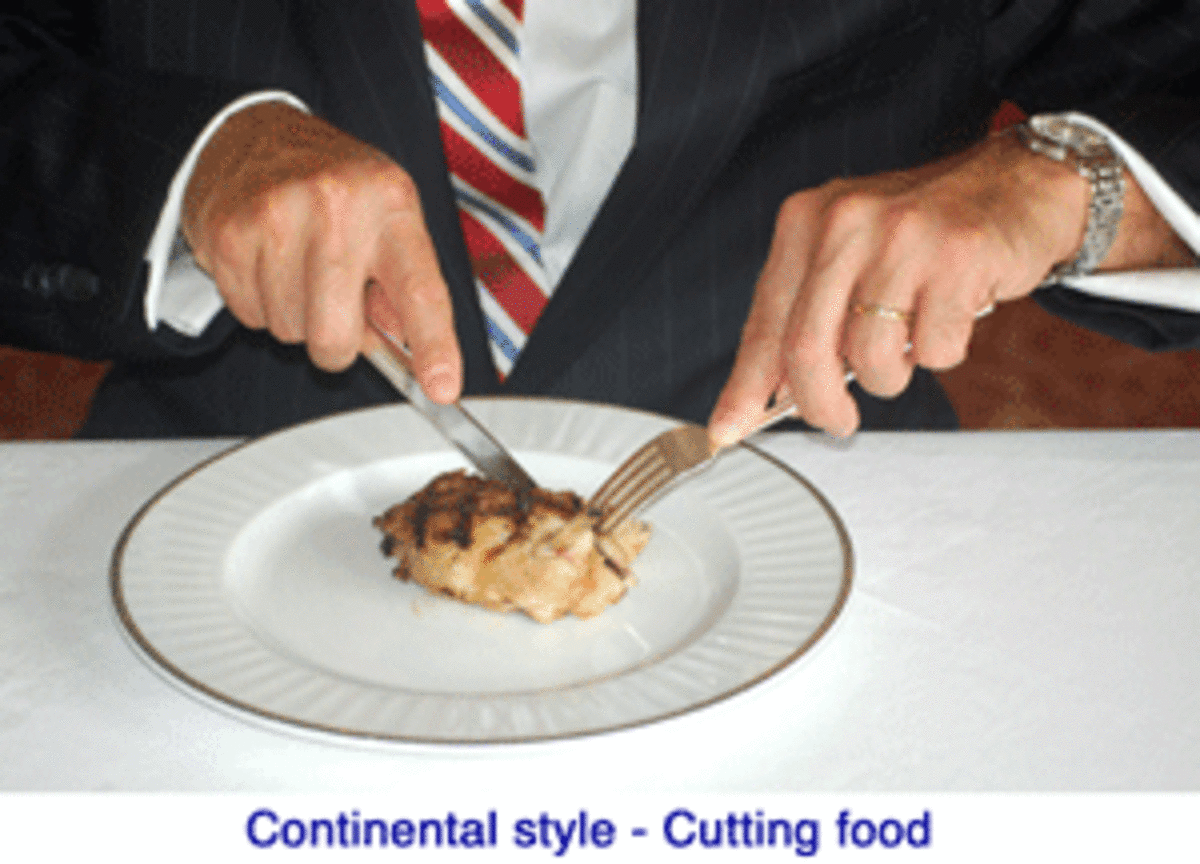Dining etiquette is more than just about knowing which fork to use; it's an essential skill that can enhance your dining experience and make you feel confident in various social situations. Mastering fork and knife etiquette is particularly crucial, as it not only reflects your manners but also shows respect for the cuisine and those around you. Whether you're at a formal dinner, a casual meal, or even a business lunch, having good cutlery etiquette can set the tone for the entire dining experience. So, let's dive into the foundational elements that will elevate your dining skills!
Understanding the Basics of Cutlery

When it comes to mastering fork and knife etiquette, understanding the basics of cutlery is paramount. Cutlery typically consists of various utensils designed for different types of food, and using them correctly can make a significant difference in how you dine. Here are some essential points to keep in mind:
- Types of Cutlery:
- Forks: Usually come in three forms: dinner forks, salad forks, and dessert forks. Each has a specific meal timing and purpose.
- Knives: Dinner knives are typically used to cut larger meats, while butter knives are designed for spreading on bread. We'll discuss them more in-depth.
- Placement: In a formal setting, the correct placement of cutlery is essential. Forks are placed to the left of the plate, while knives and spoons go to the right.
- Holding Utensils: Hold your knife in your right hand and the fork in your left. Use the knife to assist the fork in cutting food, but never point or gesture with them.
- Cutting Method: Cut one bite of food at a time, consume it, and then set your utensils down. It’s a common mistake to cut all your food at once!
Remember, practicing these basic cutlery skills will not only make you feel at ease during meals but also impress those dining with you. With a little patience and practice, you'll soon be navigating any dining scenario with grace and style!
Choosing the Right Fork and Knife for Your Meal

When it comes to dining, having the right fork and knife can significantly enhance your experience. It’s not just about functionality; the right utensils can elevate your meal and showcase the importance of the occasion. So let's dive into how to choose the right ones for your meal!
First off, let’s explore the various types of forks and knives available:
- salad fork - Smaller than the dinner fork, it’s perfect for salads and lighter fare.
- dinner fork - The standard choice for most entrées, it’s versatile and generally larger.
- steak knife - A serrated knife designed for cutting through meats with ease.
- butter knife - A small, blunt knife ideal for spreading butter or soft cheeses.
- dessert fork - Smaller with a different design, used specifically for desserts.
When selecting your utensils, consider the type of meal you’ll be enjoying:
- For a formal three-course dinner: You might need a soup spoon, salad fork, dinner fork, and dessert fork.
- For a casual meal: A regular dinner fork and knife may suffice.
Lastly, quality matters! Opt for utensils that feel good in your hands. Quality forks and knives not only perform better but also add a touch of elegance to your dining setting.
Step-by-Step Guide to Using Fork and Knife
Mastering the art of using a fork and knife may seem daunting at first, but with a little practice, you'll be maneuvering like a pro! Here’s a simple, step-by-step guide:
- Begin with Proper Posture: Sit up straight with your elbows off the table. Hold your fork in your left hand and your knife in your right.
- Knife and Fork Positioning: Use the fork to hold your food steady. Insert the tines of the fork into the food, and then position the blade of the knife against the food to cut.
- Cutting Technique: Cut through your food in small sections, one bite at a time. It’s best to only cut a few pieces at once instead of slicing everything at once, keeping the rest intact until you’re ready to eat.
- Bringing Food to Your Mouth: After cutting a piece, keep the fork in your left hand with the tines facing up. Lift the food to your mouth with the fork.
- Chewing and Swallowing: Take your time, chew slowly, and enjoy the flavors! It’s perfectly acceptable to put down your utensils between bites but remember to place them parallel on your plate when you're taking a break.
With these steps in mind, you'll find that using a fork and knife not only enhances your dining experience but also reflects good etiquette. Practice makes perfect, so don’t be shy about using these techniques at your next dinner!
Common Mistakes in Fork and Knife Usage
Using a fork and knife seems straightforward, but you'd be surprised at how easily things can go awry! Here are some common mistakes that people often make:
- Incorrect Holding: Many folks tend to hold their fork and knife awkwardly. The fork should be held in your left hand, and the knife in your right. Use your thumb and index finger to grip them properly to maintain control.
- Cutting Too Much Food at Once: Trying to cut multiple pieces of food at the same time isn't just difficult—it looks rushed and can lead to messy bites. Instead, cut one bite-sized piece at a time.
- Eating with the Knife Still in Hand: Once you've cut your food, place the knife down on the edge of your plate. Holding the knife while trying to eat can lead to spills, awkwardness, and it just doesn't look polite.
- Resting Positions: When you take a break, place your knife and fork in a proper resting position—fork tines down, knife blade facing in, and crossed. This informs others that you're still eating, and it helps avoid mixes with other diners' tables.
- Pointing the Knife: If you're pointing your knife at someone while speaking, you're not just being rude; you might end up inviting accidents, too. Keep your knife on your plate when it’s not in use!
By avoiding these pitfalls, you'll enhance not only your dining experience but also make a great impression on your fellow diners.
Cultural Variations in Cutlery Etiquette
Cutlery etiquette can vary significantly from one culture to another. Understanding these differences can help you navigate diverse dining environments gracefully. Here are some cultural variations to consider:
| Culture | Etiquette Guidelines |
|---|---|
| Western Culture | Typically, food is cut before it's eaten, with the knife in the right hand and fork in the left. It's considered polite to keep both utensils in your hands during the meal. |
| Eastern Culture (Japan) | In Japan, it’s common to eat with chopsticks instead of knives and forks. If using western cutlery, avoid sticking the knife or fork upright in your food. |
| Middle Eastern Culture | Eating with hands is often a part of the tradition! Always use your right hand, as the left is considered unclean in many cultures. |
| Indian Culture | Similar to the Middle East, food is generally eaten with hands, particularly bread and rice. Though, it is becoming common to use forks and spoons in urban settings. |
Understanding these cultural variations in cutlery etiquette not only equips you for dining around the world but also shows respect for the culinary practices of different communities. Now, who’s ready for that international buffet?
7. Tips for Practicing Good Dining Etiquette
Dining etiquette is an essential skill, and practicing it can make a significant difference in your dining experiences. Here are some helpful tips to sharpen your skills:
- Always be Polite: Remember to say “please” and “thank you.” A little courtesy goes a long way in making the dining experience enjoyable for everyone.
- Keep Your Elbows Off the Table: While it’s comfortable to rest your elbows on the table, it can come across as rude. Instead, keep your elbows close to your body.
- Wait for Everyone to be Served: It’s customary to wait until everyone at your table has their food before you start eating. This shows consideration and good manners.
- Use the Right Utensils: Always start with the outermost utensils and work your way inward as each course arrives. It’s a simple method that keeps things organized.
- Chew with Your Mouth Closed: No one wants to see or hear the food you’re chewing! Keep your mouth closed while chewing to create a more pleasant dining atmosphere.
- Pause Before Speaking: If you want to say something while eating, take a moment to swallow first. This prevents any potential food mishaps.
- Practice Table Manners: Use polite and respectful language, and avoid discussing overly personal topics. Keep the conversation light and appropriate.
By incorporating these tips into your dining routine, you’ll not only impress others but also feel more confident in your etiquette skills.
Conclusion: The Importance of Dining Etiquette
Dining etiquette is more than just a set of rules; it’s a vital part of social interaction and communication. Mastering these skills can open doors to new opportunities in both personal and professional settings. Here’s why dining etiquette matters:
| Benefits | Description |
|---|---|
| Enhances First Impressions | Proper etiquette demonstrates respect and consideration, which can make a lasting positive impression. |
| Promotes Comfort | Following etiquette practices ensures that everyone at the table feels at ease, creating a more enjoyable atmosphere. |
| Facilitates Connections | Good manners can help foster better relationships, whether they’re personal or professional, and pave the way for networking opportunities. |
| Reduces Anxiety | When you know how to behave at the table, it diminishes nervousness, allowing you to enjoy the dining experience fully. |
In essence, mastering dining etiquette can significantly impact your life, enhancing your experiences and the experiences of those around you. So, practice often, and remember that a bit of politeness can go a long way!"
 admin
admin








